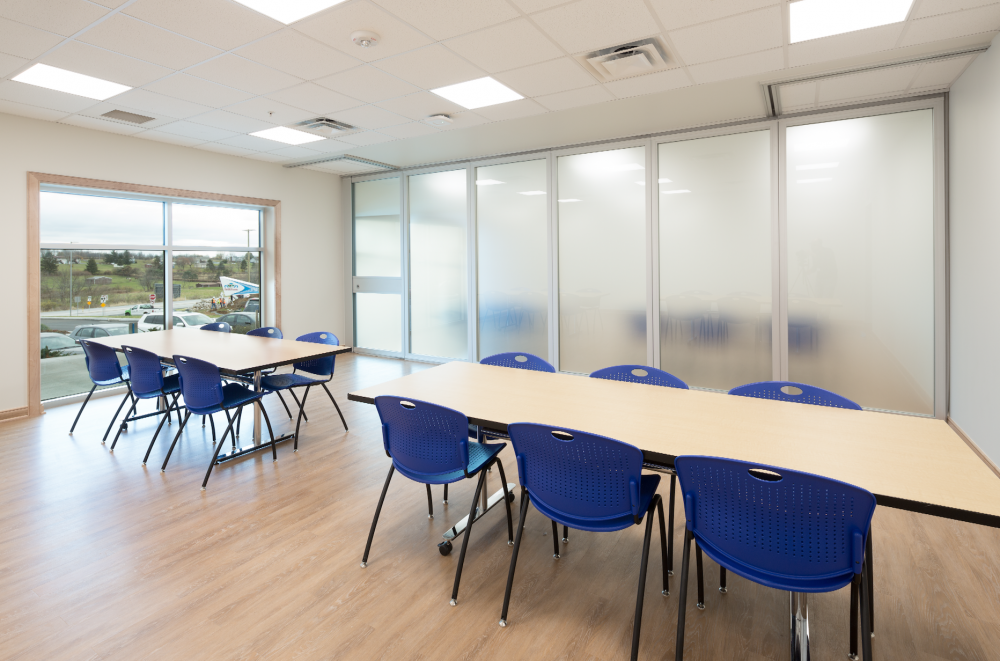Food and beverage manufacturing facilities in the U.S. today are experiencing a labor shortage, mostly due to a healthy economy and low unemployment rate. Turnover rates at these facilities are already high to begin with, so more food plant owners are looking to attract employees and increase retention rates.
Many of Stellar’s clients — whether they are building new facilities or renovating existing ones — are asking us to design employee welfare spaces to be more unique and attractive to prospective employees.
While processing areas are still the heart of a food plant, these spaces are increasingly being viewed from a personnel-focused perspective. Plus, break rooms and employee amenities are becoming more important for business than ever before.
Here are seven employee-focused design trends we’re seeing in today’s modern food plants.
1. Attractive, comfortable spaces
Employee welfare areas aren’t just an afterthought. Many companies are requesting designs that are modern, bright and comfortable with high-end finishes. In short: They want to create a space where people actually want to be, even at work.
There’s an increased focus on including more windows to let natural light into offices, lobbies and break rooms. (This is especially important since exterior windows can’t be placed in food processing areas.) Companies are also investing in employee lounges with televisions and other amenities, in addition to a basic cafeteria space.
2. Mothers’ rooms
We’ve had several clients who are designating space for nursing mothers who work at their facility. These private rooms typically feature locking doors, comfortable seating, a refrigerator and a sink. I’ve worked on two projects in the past two years that have specifically requested a mother’s room be included in the building’s design, and I anticipate this trend will continue.
3. Recreational spaces
Companies are investing in more amenities for their employees to enjoy during their breaks and lunch time. We’ve designed small gyms and fitness centers in some food plants that allow employees to workout before work, after their shift or during their lunch hour. In my most recent project, the client requested a large recreation space to accommodate guided stretching exercises that help employees get moving first thing in the morning. We designed the cafeteria as a flexible space where furniture could easily be rearranged to convert the room into a stretch studio. One client in Mexico even requested an employee soccer field outside the facility!
4. Comfortable room temperatures
Many facility owners are paying more attention to the configuration of their HVAC systems and how room temperature affects employee performance and comfortability. We’ve seen more food plants adjusting room temperatures so that they’re cool enough to maintain food safety standards, but not unnecessarily cold, so that employees can be as comfortable as possible. Some clients have also invested in special air distribution units, such as ones that “mushroom” the air flow upward rather than blowing a direct draft on employees.
5. Easy access to restrooms and water fountains
This is a seemingly small feature, but it’s an important one when you consider the amount of times plant personnel need to access restrooms and water throughout the day. When designing a facility, Stellar factors in traffic flow and walking distance from the plant floor to restrooms and water fountains to make these paths as efficient as possible.
6. On-site company stores and products
Some companies include a small store in the design of their processing facilities where the company’s products are offered to employees at a discount. Others simply provide open coolers in the break room where employees can enjoy the product they’re producing for free. Not only does this perk help discourage theft of the product, but it can also convert employees into consumers. They’re more likely to be an “evangelist” for the brand and be more invested in the work they’re doing if they can enjoy what they’re producing and feel more connected to the product.
7. Vending and food options
Many food plants are located in remote locations, so there typically aren’t many dining options nearby, if any. Most facilities have vending machines for employees to purchase snacks or drinks while on break, but many are now investing in a greater selection and higher quality vending options as a benefit for workers. For one recent project, Stellar designed a special parking lot, at the owner’s request, so that food trucks could visit the facility. (Of course, allowing food trucks is not always suitable for every facility, as it could pose a food safety threat.)
These are just a few features today’s food plants are including to help attract and retain employees. Does your facility have unique employee welfare areas? Feel free to share in the comments below. Have questions about designing these spaces for your facility? Email me at foodforthought@stellar.net



